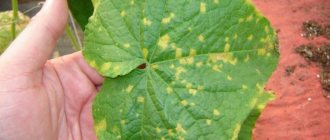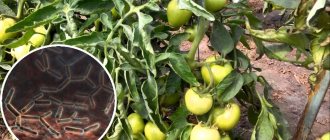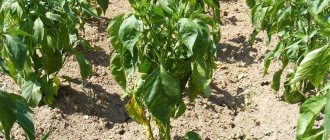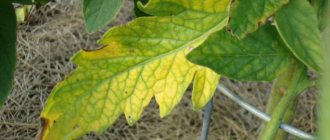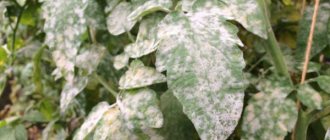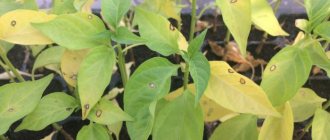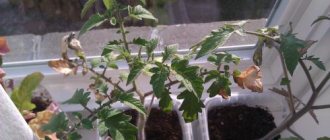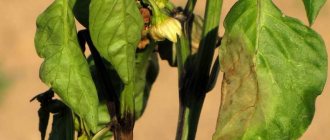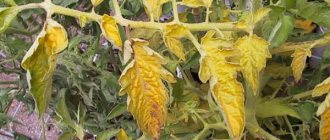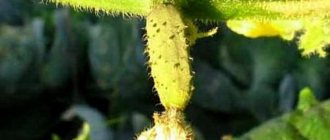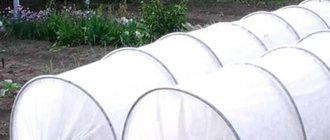Almost every gardener has encountered the problem of wilting leaves of cucumbers. This usually happens in a greenhouse or under cover. First, one leaf withers, and then the whole vine. Moreover, both young plants and fruit-bearing plants suffer from this scourge.
The first thought that comes to the gardener’s mind in such a situation is that it is necessary to water urgently. But if after watering there are no changes, then the problem is deeper and we need to look for the reasons. And there may be several of them. We'll tell you how to recognize trouble and help cucumbers.
Reasons for wilting of foliage on cucumber ridges
Many gardeners, in order to protect their harvest from unfavorable climatic conditions, began to plant cucumbers in a greenhouse or hothouse. But this does not save the borage greens from inexplicably wilting.
To understand why the green mass on the cucumber plantings in the greenhouse suddenly began to wither, it is necessary to identify the reason for this behavior of your favorite vegetable.
What is the reason for this phenomenon? There may be more than one:
- Deficiency or excess of moisture.
- It's very hot in the greenhouse.
- When planting, the optimal distance between the bushes was not maintained (the vines were heavily intertwined, preventing the vines from blowing air).
- Watering with cold water. Vegetables should be watered with warm water (20-22 degrees).
- A fungus or virus has infected the roots of the plant.
- Cucumbers do not tolerate proximity to tomatoes if they grow in the same space.
- The chemicals used to feed the plants got on the leaves and burned them.
- Deficiency or excess of fertilizers.
- Being under the hot rays of the sun.
- Loosening the soil is very close to the roots, which causes harm to them.
As you can see, there are a lot of reasons. What to do to save the plantings?
Temperature
If the seedlings have wilted, you need to check whether the ambient temperature is suitable. For seeds to germinate, a temperature of +25°C...28°C is needed, and when shoots appear, it is necessary to maintain it in the area of + 20°C...+ 23°C. At night, the thermometer should not fall below + 18°C. Changes of more than 7°C are unacceptable. Violation of the temperature regime in a greenhouse leads to stretching, yellowing, wilting, disease and, as a result, death. If the seedlings wither after planting in open ground, then perhaps the cause was night frosts. To prevent this, seedlings must be covered for the first time.
How not to lose your cucumber harvest
If the summer is hot and sunny, then the leaves begin to turn yellow from the heat. How to fight? It is necessary to regulate the temperature in the greenhouse: ventilate, water the beds in the morning and evening, shade the roof of the greenhouse from the sun. Some gardeners cover the roof with white fabric or transparent non-woven material.
Bee-pollinated varieties can also wilt due to poor pollination. Place a bowl of jam in the greenhouse to attract insects that will pollinate the flowers.
Self-pollinating varieties also need help. To do this, several times a day, gently shake each stem or use a brush to transfer pollen from male to female inflorescences.
Nitrogen deficiency
Nitrogen deficiency also affects the appearance of foliage. Feeding with urea will help compensate for this deficiency.
On the “Prosperity” channel you can get valuable recommendations on how to help the soil maintain its nitrogen content and thereby feed the plants.
Ivan Russkikh recommends planting legume green manures in the beds or using biological products, in particular BioMaster M, made in Novosibirsk. This drug is of very good quality, as evidenced by the experience of using it.
Azotobacter, which is present in this preparation, well enriches the soil with natural nitrogen. On poor, sandy soils it will be useless, since bacteria have nothing to feed on. To give the bacteria something to feed on, you can first water the soil around the bushes with a sweet solution, a decoction of potatoes, cabbage or pasta.
Thanks to this drug, the soil will be enriched with nitrogen not chemically, but naturally. As soon as you notice that tomatoes and cucumbers lack nitrogen, use this preparation.
Often, when loosening, small roots are touched. If you hit the roots during loosening, you should immediately spud up the seedlings and feed them with nitrogen.
And if the lower leaves turn yellow, then they simply do not have enough light. Tear off the dried leaves and the problem will be solved.
Leaves dry out from a deficiency of potassium, phosphorus or magnesium. Weak plants can be watered with reliable preparations: Previkur, Topsin, Bayleton. After watering, the seedlings will begin to grow stronger and recover.
Lighting
Plants need light for photosynthesis; without it, plants weaken and disappear. In February and March, when seeds are planted for seedlings, daylight hours are still short; this may not be enough for cucumbers.
Signs that there is not enough light and there is a risk that the seedlings may die:
- the plants turned pale;
- no true leaves, only cotyledons;
- the stems stretched and weakened;
- the seedlings fell towards the light source.
To solve this problem, cucumber seedlings need to be illuminated in the morning and evening. The most convenient way to do this is with special phytolamps; you need to keep the boxes with seedlings under them for about four hours a day. In total, plants need 12-16 hours of daylight. When the seedlings have already grown, you cannot sharply increase the period of illumination; you need to accustom the sprouts to lamps gradually. If it is not possible to purchase such equipment, ordinary fluorescent or aquarium lamps will do. In this case, the dark period of the day should be at least 6 hours. It should be remembered that direct sunlight is dangerous for seedlings; they can cause burns on delicate leaves. Therefore, when placing seedlings in boxes, you need to provide them with diffused light.
How to cure cucumbers from diseases
If fungi and other infectious pathogens get inside the plant, then the cucumber greens lose their strength and become lifeless. The most common diseases of greenhouse vegetables are root rot and fusarium. When the roots are damaged, the plants begin to eat poorly, so the leaves lose their tightness, especially during the day.
Root rot
Signs of white rot: during the day the green mass withers, and in the evening it is restored again and the owner of the greenhouse calms down. Meanwhile, the disease continues to develop. The next day the same picture repeats. In this case, urgent measures must be taken.
The advice of Valery, the host of the Do-It-Yourself Garden channel, will help get rid of this disease and restore cucumber plantings.
He named three ways to get rid of this scourge:
- At the very base of the bush, remove the leaves and look for white protrusions. These are the future roots of the plant. They need to be sprinkled with drugs. From these white pimples, healthy roots will soon appear that will nourish the entire bush.
- Pour foundationazole under the root. Fundazol is a good drug that will help save cucumber plantings. The consumption rate is written on the packaging. There is no need to exceed it. After 7-10 days you need to water again.
- The drug Fitosporin is also often used by vegetable growers to save crops. To save plants from fungal problems, the rate of Fitosporin should be doubled. It is necessary to water at the root. After 10 days, treat again.
Fusarium
No less dangerous are the fungi Fusarium and Verticillium, which cause plant death.
Fusarium is a fungal disease in which the upper leaves droop, then part of the stem at the root begins to rot, and the remaining leaves also gradually curl and dry out.
Treatment is carried out with the drugs Fitosporin, Heteroauxin, Kornevin, Trichofit.
Brown spots can be seen at the base of the stem. Gradually, leaves, shoots, stems become covered with spots, and vegetable plantings die. How to treat these diseases? Trichodermin will help fight the disease.
Fusarium can affect all plants in a greenhouse. Therefore, as soon as you notice brown spots, immediately begin the fight. Experts in growing cucumbers recommend choosing cucumber varieties that are resistant to fusarium: Ideal, Caprice, Sudar, Ryabinushka.
If suddenly the beds began to wither all at once, what should be done? To save the plantings, you will have to treat them with insecticides: Aktara, Aktellik.
Infections
Fungal infections such as fusarium or root rot can also cause seedlings to fall. Their development is facilitated by:
- excessive watering;
- high ambient humidity;
- lack of drainage;
- sudden changes in temperature;
- contaminated soil or seeds.
For prevention, soil and seeds are disinfected before planting using a solution of potassium permanganate. In addition, they can be calcined at a temperature of + 60°C using an oven. After watering the seedlings, the soil must be carefully loosened to ensure oxygen access. If the seedlings are already sick, they are treated with biofungicides or chemicals. At the initial stage, the plants can still be restored. In case of severe damage, it is advisable to destroy the seedlings.
Expert opinion
Stanislav Pavlovich
Gardener with 17 years of experience and our expert
Ask a Question
Another fungal infection, Blackleg, can also lead to the death of entire seedlings. At the first signs, the seedlings are treated with Fitosporin and watering is reduced.
Folk remedies in the fight against pests and diseases
In a greenhouse, cucumber lashes can be destroyed by aphids, spider mites or whiteflies. A simple folk remedy made from onion peels and soap shavings will help fight pests:
- Collect as many onion skins as possible. It can be harvested all winter and then used to treat diseases.
- Pour hot water over a glass of husk, let it brew for a couple of hours, pour into 5 liters of water.
- Grate half a bar of soap.
- Add to the onion infusion and process the vines.
If you notice that the greens of the cucumbers have begun to fade, then ash will help restore the tugor: 100 grams of ash, pour a bucket of boiling water, let it brew for one day. Strain the solution, then rub laundry soap into it and treat the bushes.
Many gardeners save whips from fungal diseases with whey. Mix two liters of whey with 2 liters of water, spray each lash on all sides.
Milk and iodine will help get rid of harmful bacteria. The drug is considered to be a remedy that stimulates plant growth and strengthens their immunity. In the same case, iodine acts as a protector against diseases and wilting of borage.
To prepare the solution you will need iodine and milk, preferably homemade. In a bucket of water, dilute 30 drops of iodine, 1 liter of milk and half a piece of tar or laundry soap. Spraying of vines should be carried out on all sides every 2 weeks.
Another folk remedy will help against yellowing: take 350 g of potato tops, pour a bucket of hot water, add soap. After 3-4 hours you can spray the vegetable plantings.
How to use baking soda
For many gardeners, soda is a real salvation for cucumbers from all problems.
- Baking soda is used as a disinfectant for seeds. Make a weak soda solution, then soak the seeds for 20 minutes, dry them slightly, then plant them in the soil.
- If you notice pests, then twice a week the beds with cucumbers are watered with the following soda solution: 2-3 tbsp per 10 liters of water. l. soda There is no need to overfeed; dilute the soda strictly according to the recipe.
- The foliage is sprayed with the same solution. This is a good prevention against pests. You can spray it on the stems and fruits.
- For the appearance of ovaries, 2 feedings are carried out. The first is 2 weeks after planting the seedlings. The second one 14 days later.
- When barren flowers form, another feeding is carried out.
- Treat against powdery mildew at the first sign of white plaque.
Root damage
If the seedlings droop after planting, the roots may have been damaged. Cucumbers do not tolerate picking well, so it is better to sow the seeds in separate peat cups or tablets; this method will reduce the risk of injury to the roots in the garden. But some gardeners note that at the same time, the percentage of blackleg disease is higher. In this connection, many people prefer to use plastic cups; then, when transplanting, the seedlings are taken out of the container with a lump of earth around the roots, and before that they are watered abundantly.
Unexpected use of greenery
When growing cucumbers, gardeners are increasingly using drugs that are in every medicine cabinet. For example, iodine is used to disinfect the soil before planting seedlings. To do this, dissolve 3 drops of iodine in 10 liters of water.
During the flowering period, it is recommended to treat every 10 days. The iodine solution contains a lot of copper, which has a beneficial effect on the harvest.
How is greenery used? It turns out that brilliant green helps increase productivity and prevent the occurrence of various diseases.
The brilliant green contains a large amount of polychrome, copper, and copper oxide. If you treat seedlings or mature plantings, the foliage becomes a rich green color.
It is also used to strengthen roots, against yellowing of leaves, to stimulate growth, and prevent diseases: 10 drops of brilliant green per 10 liters of water. This pharmaceutical drug has an excellent antifungal effect. It is used as a prevention of peronosporosis and bacteriosis.
Two components fight powdery mold well: 15 drops of brilliant green in 2 liters of milk or whey, add a pinch of urea, stir in a bucket of cold water, water the plants during flowering or fruit formation. Next watering in 2 weeks.
Signs of seedling disease
There are six main signs that indicate that cucumbers are beginning to die.
Leaves turn yellow and dry out
The most common symptom is the appearance of yellowness on the leaf blade. Most often, this problem occurs due to an attack by tobacco whitefly. This small insect is a carrier of many viral diseases.
Often the leaves begin to dry out and turn yellow in self-pollinating parthenocarpic varieties. Drying of the foliage leads to deterioration of fruiting and further death of the seedling.
Thinning and drying of the stem
Drying of cucumber seedlings is accompanied by drying out and thinning of the stems. Such signs begin to appear if seedlings become infected with root rot, which appears due to improper care of planted seedlings. The stem may dry out due to:
- sudden changes in temperature;
- using cold water for irrigation;
- lack of fertilizing.
Curling leaves
Wilting of seedlings, accompanied by leaf curling, occurs due to insufficient moisture. Plants consume a lot of moisture, which leads to yellowing and curling of the foliage. First, yellow spot develops on the leaves located on the lower branches. However, the yellowness gradually spreads to the adjacent sheets above.
Developmental delay without noticeable reasons
Another sign of the gradual wilting of cucumbers is the slow development of each stem of the bush. The bushes begin to develop more slowly than healthy cucumbers. This negatively affects plant growth, as well as the speed of fruit ripening. Delayed development of bushes can occur at any stage of vegetable growth.
The roots of the seedlings die
The death of the root system is associated with the development of fungal diseases that appear due to waterlogging of the soil. Due to the large amount of moisture in the soil, fungal bacteria develop, which gradually penetrate the roots. This leads to yellowing of the foliage, as well as death of the roots.
Cucumbers die after germination
There are cases when cucumbers begin to die immediately after the first shoots appear. This happens if you plant seeds that are not disinfected. Such seeds contain pathogens that are activated after germination of the seed.
First aid for yellowing leaves
Many gardeners keep any fungicide on hand for emergency use. For powdery mildew, for example, topsin or TOPAZ. The drug "HOM" gives good results. Take 40 g of powder, dilute in 10 liters of water. Spray the borage using 1 liter of solution per 10 m².
Downy mildew is a downy mildew, when abundant light yellow spots appear on the leaves. Then the spots increase and the leaves dry out
Treatment with a warm (about +25°C) solution of polycarbacin, copper oxychloride or Bordeaux mixture (copper sulfate - 100 g and 100 g and dilute freshly slaked lime in 10 liters of warm water) will help stop the spread of the disease.
The drugs “Ordan” and “Ridomil” fight downy mildew.
Cladosporiosis - brown olive spot. Treat the plants with a 1% solution of Bordeaux mixture or Fundazol.
Sclerotinia - white rot
If the disease has already spread greatly, remove the infected parts of the plants or the entire bush. Feed the cucumbers with this solution: 10 g of urea and 1 g of zinc sulfate and copper sulfate.
Gray rot. Treat with Bayleton fungicide. Remove the affected bush immediately.
Anthracnose (sedipweed), when brown spots appear on the leaves, stems and fruits, and the foliage begins to dry out, it is necessary to spray with 1% Bordeaux mixture once a week before harvesting, and treat the affected areas with a solution of copper sulfate (0.5% - m), then sprinkle with lime or coal.
As practice shows, the drug trichopolum helps to cope with various diseases of cucumbers.
Treatment with trichopolum is carried out for the following diseases:
- parasporosis;
- fusarium;
- powdery mildew;
- sclerotinia.
- vascular bacteriosis;
- wet rot;
- angular spotting.
Spraying will help save you from diseases. You will need 1 tablet of trichopolum, which is diluted in 1 liter of warm water. You can treat the soil: 5 tablets are required for 10 liters of warm water. First, water with plain water, and then with a solution of trichopolum.
For prevention, 3 tablets per bucket are enough. And to enhance the effect of the drug, add 10 ml of brilliant green and 10 tablets of trichopolum to a bucket of water.
How potassium permanganate will help
We must not forget about such a drug as potassium permanganate. Everyone knows that seeds are soaked in potassium permanganate before sowing. But this is not all actions with potassium permanganate.
- Watering the soil after harvesting and before planting. Take 5 g of potassium permanganate, dilute in 10 liters of water. Water the bed before planting the seeds. This manipulation protects against diseases.
- Watering the holes. The holes where the cucumber bushes will be planted should be watered with the same solution.
- Spraying of plantings. The solution is prepared as follows: 3 grams of potassium permanganate per bucket. Carry out the treatment 3 times as soon as you notice any disease. And then every 2-3 days until the problem disappears.
Dear friends, now you know why cucumber leaves wither in a greenhouse and how to save them. Save the cucumber beds!
